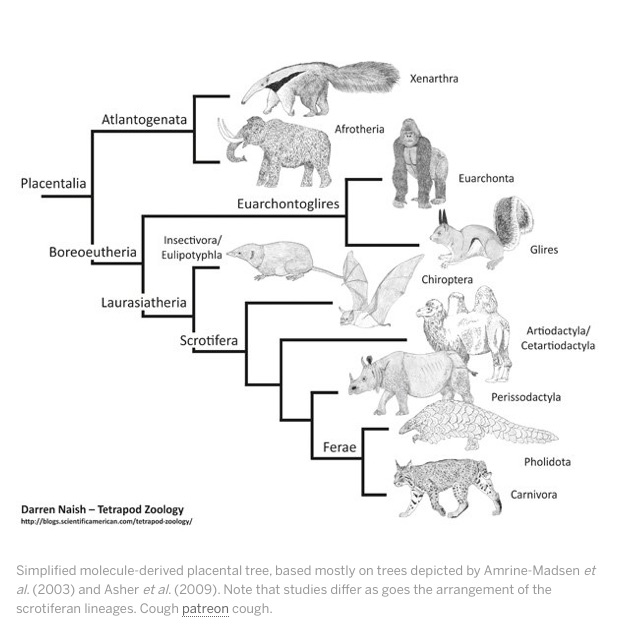54.0 – 51.1 million years ago
We’ve seen a great many catastrophes in the history of life, and been reminded of the role of sheer chance in evolution. But the Cenozoic also sees a dramatic adaptive radiation and the steady progress of arms races among survivors of the great dinosaur die-off. Four large scale groupings of placental mammals have already appeared: Afrotheres (aardvarks, hyraxes, elephants, and sea cows), Xenarthrans (anteaters, armadillos, and sloths), Laurasiatheres (shrews, hedgehogs, pangolins, bats, whales, hoofed animals, and carnivores), and Supraprimates (aka Euarchontoglires, including rodents, tree shrews, and primates). This grouping of mammals is anything but obvious – it’s only with DNA sequencing that it has emerged. What’s noticeable is the association with different continents: Afrotheres with Africa, Xenarthrans with South America, and the others with the monster content of Laurasia (Eurasia and North America). Looking beyond placental mammals we see other continental associations: marsupials flourish in South America and Australia, and giant flightless “terror birds” carry on rather like predatory dinosaurs in South America.

There is a pattern here. Evolutionary arms races are most intense in the supercontinent of Laurasia (eventually joined by India and Africa). The island continents of South America and Australia stand apart, and they fare poorly when they start exchanging fauna with the rest of the world. We’ll see a similar pattern – large areas stimulate more competition, and more intense evolution, isolated areas are at a disadvantage – when we look at modern history, with ocean voyages effectively reuniting Pangaea. (This is a major theme of Alfred Crosby’s Ecological Imperialism and Jared Diamond’s Guns, Germs, and Steel.)
